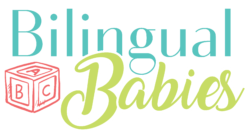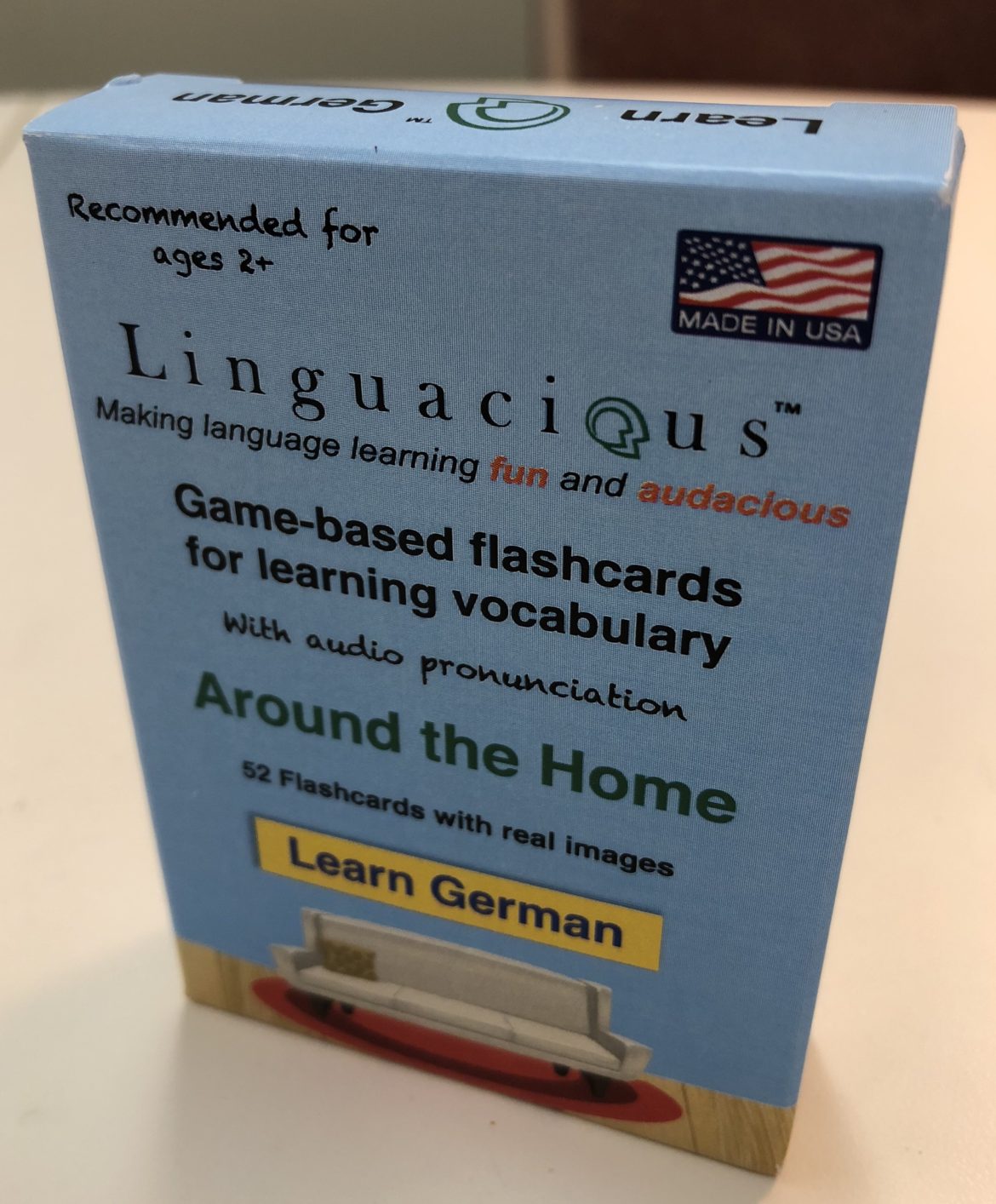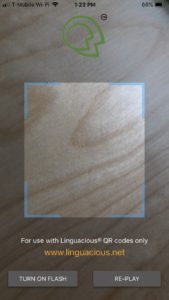Using traditional flashcards for language learning has one major caveat: you cannot hear how to pronounce the word. So you may be able to read the word on the card and eventually learn how to write it. But you may scratch your head time and again, thinking how on earth was this word pronounced again?
Linguacious flashcards offer an innovative solution. They come with audio pronunciation! You can listen to each word spoken by a native speaker.
Here is how it works:
A Linguacious deck of cards includes 52 flashcards. The flashcards have the size of a regular deck of cards. On the front of each card you can see a picture of the given word.On the back side, you see the word spelled out (e.g., der Eimer). So far so good. This is pretty much what you are getting with traditional flashcards. Now Linguacious takes it a step further! The innovative feature of Linguacious flashcards is a QR code on both sides.
Linguacious offers an app that you can download for free. This app has a special QR scanner that allows you to easily scan the codes. Immediately you can listen to the word spoken by a native speaker. By the way, scanning the QR code with the smart phone is a lot of fun for children!
Before trying the Linguacious app, I tried it with a QR scanner I already had on my phone. It was rather tedious. Then I used the Linguacious app that is designed just for the flashcards. The difference was striking!! There is absolutely no delay. You hear the audio immediately. It worked extremely well and provided a smooth user experience—an important feature if you use the cards with children! So definitely 5 stars for the technology behind the Linguacious flashcards.
Also, the cards feature the regular four French playing cards: diamonds (♦), clubs (♣), hearts (♥), and spades (♠). Why would you need that for flashcards? Here is why:
Playful learning
The Linguacious family did not stop at producing flashcards with audio pronunciation. Victor Santos and his wife Olya, the makers of the Linguacious flashcards, are both experts in language learning. By the way, that’s how I know Victor, he is a colleague of mine with a PhD in linguistics. Victor and Olya knew that in order to engage children, you have to make language learning fun, playful, and entertaining. So they also came up with a number of games that you can play with the flashcards. The games make use of the suits, the colors, the images and the words on each card in a very creative way. Some of the game instructions are included in the deck of cards. But you can find many more game ideas on their website.
Until now, Linguacious offers a variety of languages, including German, for word fields such as Animals, Around the Home, Food and Beverages, and Verbs). Ella (27 months) and I played Around the Home this weekend and loved it.
And yes, as a native speaker of German, I can provide all of the audio, but it was fun and engaging for Ella to hear another speaker and to scan the cards!). So it is definitely an activity that also native speaker parents can use with their children.
Ten reasons why I like and recommend the Linguacious flashcards:
- The cards allow you and your children to practice all four skills: listening, reading, speaking and writing
- The images on the cards are sharp and clear
- The tech behind it works well
- The pronunciation is clear and intelligible
- It’s a fun and engaging way to learn new words
- The cards are useful for both native speaker parents and non-native speaking parents
- The cards can also be used in schools or daycares in a classroom setting.
- They games combine physical activity with language learning (e.g., playing games or simply scanning the cards)
- You can be creative. You can focus on a single language or— if you are a family with multiple languages—you could mix different sets of flashcards and include all of the family languages.
- The cards have the size of real playing cards so you can use card protectors if you play with very young children—a feature that may come in quite handy!




